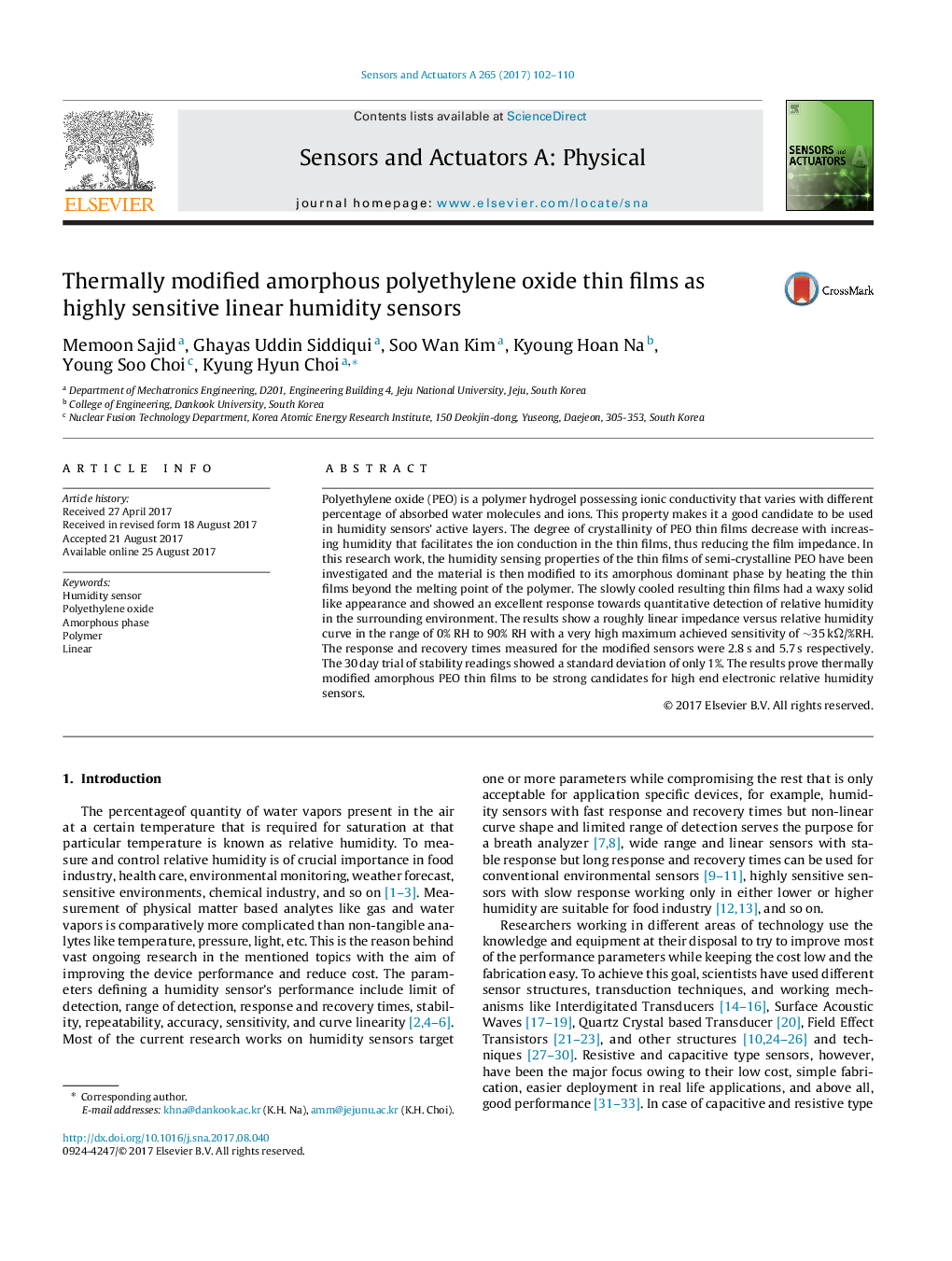| کد مقاله | کد نشریه | سال انتشار | مقاله انگلیسی | نسخه تمام متن |
|---|---|---|---|---|
| 5008187 | 1461835 | 2017 | 9 صفحه PDF | دانلود رایگان |
- Investigation of the roles of semi-crystalline and amorphous phases of PEO on its humidity sensing performance.
- Amorphous PEO thin films show excellent linear sensing characteristics.
- Detailed study of working principle and machanism through chemical, physical, and electrical characterizations.
Polyethylene oxide (PEO) is a polymer hydrogel possessing ionic conductivity that varies with different percentage of absorbed water molecules and ions. This property makes it a good candidate to be used in humidity sensors' active layers. The degree of crystallinity of PEO thin films decrease with increasing humidity that facilitates the ion conduction in the thin films, thus reducing the film impedance. In this research work, the humidity sensing properties of the thin films of semi-crystalline PEO have been investigated and the material is then modified to its amorphous dominant phase by heating the thin films beyond the melting point of the polymer. The slowly cooled resulting thin films had a waxy solid like appearance and showed an excellent response towards quantitative detection of relative humidity in the surrounding environment. The results show a roughly linear impedance versus relative humidity curve in the range of 0% RH to 90% RH with a very high maximum achieved sensitivity of â¼35 kΩ/%RH. The response and recovery times measured for the modified sensors were 2.8 s and 5.7 s respectively. The 30 day trial of stability readings showed a standard deviation of only 1%. The results prove thermally modified amorphous PEO thin films to be strong candidates for high end electronic relative humidity sensors.
Journal: Sensors and Actuators A: Physical - Volume 265, 1 October 2017, Pages 102-110
